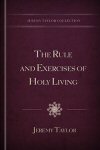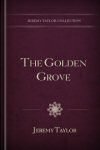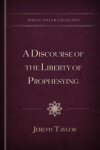Jeremy Taylor Collection (4 vols.)
Digital Logos Edition
Overview
Known as the “Shakespeare of Divines,” Jeremy Taylor was a priest and writer during the reign of Charles I, the protectorate under Oliver Cromwell, and the reign of Charles II. Taylor, the son of a barber, attended Cambridge University and was ordained by the time he was 20. His best-known works are the devotionals The Rules and Exercises of Holy Living and The Rules and Exercises of Holy Dying, which were favorites of John Wesley and Samuel Taylor Coleridge. Taylor also wrote an appeal for religious tolerance 50 years before John Locke’s famous Letters concerning Toleration.
The Jeremy Taylor Collection contains the two beloved devotionals, his essay on religious tolerance and The Golden Grove, a manual for personal devotion. The Logos Bible Software edition lets you examine difficult theological terms using the dictionary lookup tool, and links Latin, Greek, and Hebrew words to other language resources.

- Both volumes of Taylor’s classic devotionals Holy Living and Holy Dying
- Biographical sketch
- Hymns and prayers for public and private devotion
- Title: Jeremy Taylor Collection
- Author: Jeremy Taylor
- Volumes: 4
- Pages: 1,069

The Rule and Exercises of Holy Living
- Author: Jeremy Taylor
- Publisher: Longmans, Green, and Co.
- Publication Date: 1890
- Pages: 310
In The Rule and Exercises of Holy Living, Taylor argues that “all our labors and care, all our powers and faculties, must be wholly employed in the service of God, and even all the days of our life.” Tayor’s hope was that, by way of specific instruction, prayers, meditations, and readings, Holy Living would give Christians the tools to live that life. A combination of poetry and prose, this work has been a much-loved devotional since its publication more than 350 years ago.

The Rule and Exercises of Holy Dying
- Author: Jeremy Taylor
- Publisher: Rivingtons
- Publication Date: 1880
- Pages: 248
In The Rule and Exercises of Holy Dying, Taylor examines and reflects on many aspects connected with death and dying. His goal is to provide “considerations concerning preparation for a holy and blessed death.” Taylor structures the book by offering a reflection on a particular aspect associated with death (e.g., the shortness of one’s life), followed by practical advice based on that reflection.

The Golden Grove
- Author: Jeremy Taylor
- Publisher: SPCK
- Publication Date: 1840
- Pages: 96
Named for the estate of his patron, Richard Vaughan, second Earl of Carbery, The Golden Grove is a devotional manual organized according to the days of the week. Presenting “what is to be believed, practiced, and desired or prayed for,” the manual also contains festival hymns that are geared toward younger people.

A Discourse on the Liberty of Prophesying
- Author: Jeremy Taylor
- Publisher: Duff Green
- Publication Date: 1834
- Pages: 415
A Discourse on the Liberty of Prophesying is an essay on the need for religious freedom. It purports to show “the unreasonableness of prescribing to other men’s [sic] faith; and the eniquity [sic] of persecuting differing opinions.” The essay is unique for a number of reasons, one of which is that it was written nearly 50 years before John Locke’s seminal “A Letter Concerning Toleration.”
Jeremy Taylor (1613–1667) was born to a barber in Cambridge. He attended Cambridge University and was ordained when he was 20. Taylor caught the attention of William Laud, the archbishop of Canterbury, who became his patron. At Laud’s recommendation, Taylor was made chaplain to King Charles I. His association with Laud and King Charles made him suspect when the Puritans defeated the King’s forces in the English Civil War. After the restoration of Charles II, Taylor was made bishop of Down and Conner in Ireland.
Reviews
4 ratings

Randy Lane
1/16/2015
AeliusCicero
6/19/2014

Jack KiChan Kwon
6/13/2014

Larry Proffitt (I
5/29/2014